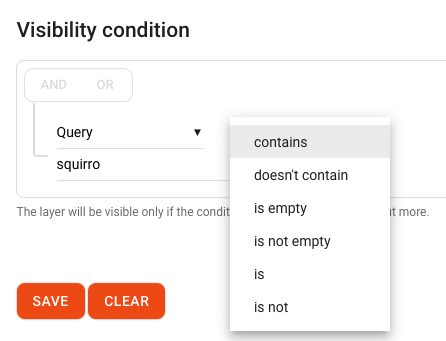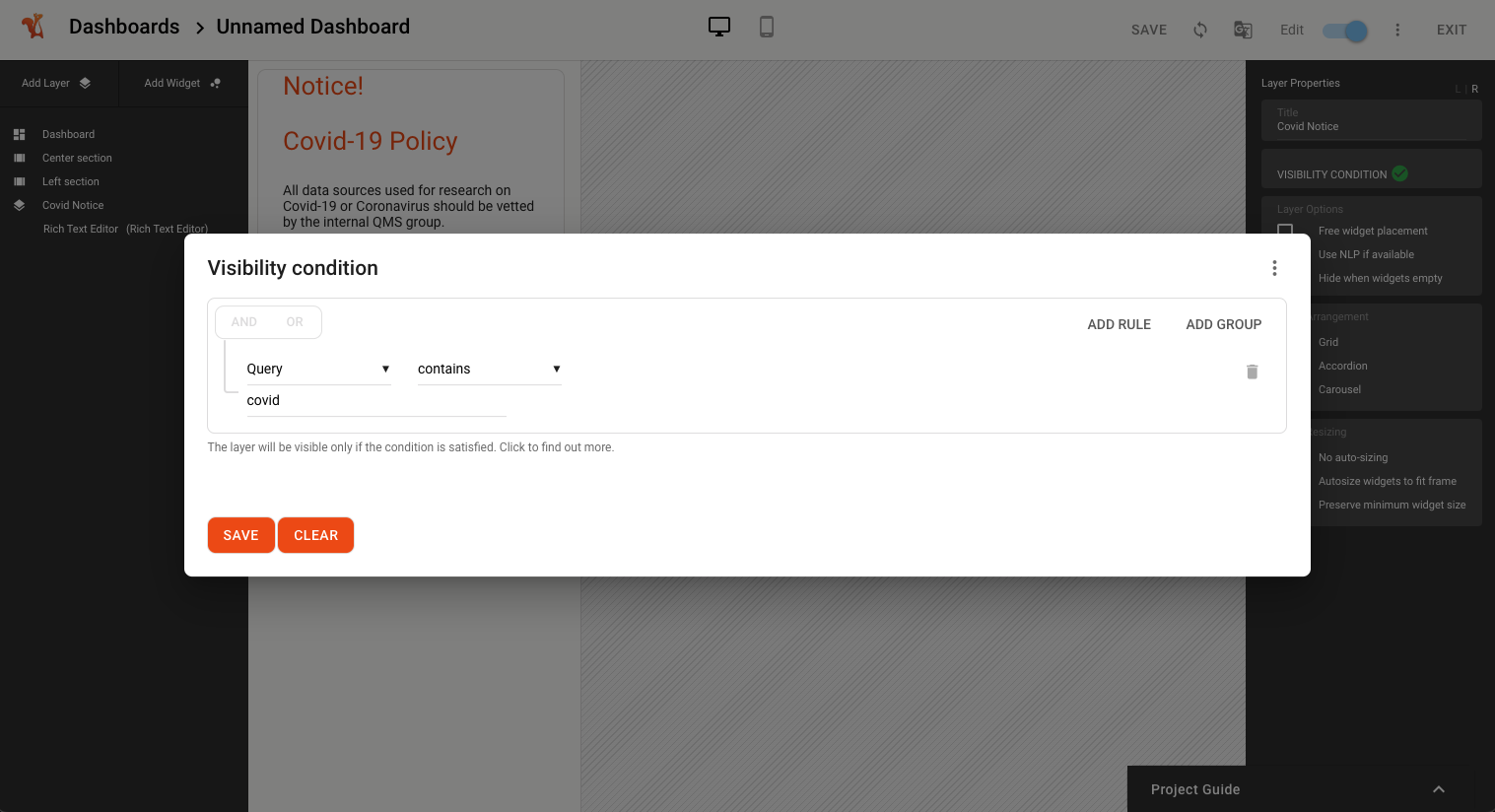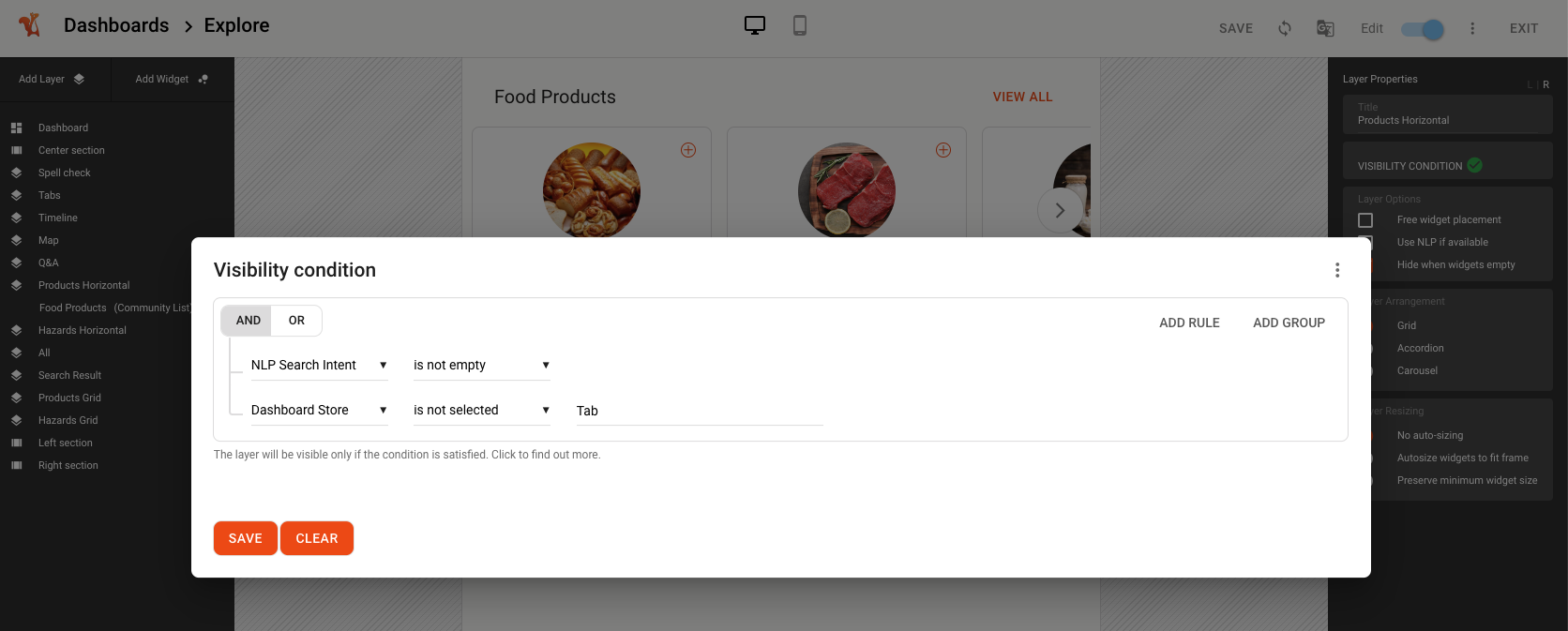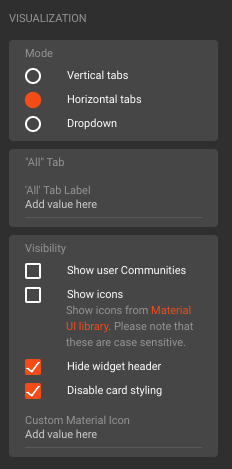Visibility Conditions#
Visibility conditions are an important means of choosing when and how certain sections or layers within Squirro’s Dashboard Editor are displayed.
When building complex dashboards, you’ll need to set visibility conditions to ensure that the correct layers (and their widgets) are displayed at the correct time.
Layer Visibility Conditions#
You can set visibility conditions for individual layers of your dashboard.
Visibility conditions are dependent on the rules you set within the Visibility Condition editor.
These are found in the Layer Properties panel, which can be accessed by following the steps below:
Open the Dashboard Editor for your dashboard.
Click the layer you want to edit.
Click Visibility Condition + in the Layer Properties panel.
Use the dropdown to select your configuration options.
Visibility Condition Options#
Squirro offers several options for setting visibility conditions, including the following:
Query
Selection
Dashboard Store
Label
Spell check
NLP Search Intent
URL Parameter
Communities
Language
Query#
The Query option allows you to set visibility conditions based on the query that is entered by the user.
You can choose based on the options shown in the drop-down menu shown below:

In the example below, a rich text widget is contained within a layer that is set to be visible when the query contains the word Covid, as it contains a corporate policy notice about which data sources can be used for Covid research.

Label#
The Label option allows you to set visibility conditions based on the labels that are applied to the query.
In the example below, the layer is visualized when either the label United States or its country code is selected:

Dashboard Store#
To learn more about using the Dashboard Store to visualize layers, see Dashboard Store.
Spell Check#
This option allows you to show or hide layers based on whether the user’s query has an associated spelling suggestion.
In the example below, a layer is set to be visible only when the query does not have a spelling suggestion. This is because the layer contains widgets that allow the user to drill down further into the query, and that option should not be presented if the query is misspelled.

NLP Search Intent#
This is primarily used as a boolean “Is there a search? Yes or No” option that allows you to show or hide layers based on whether or not a search has been performed.
In the example below, a list of communities is shown only when the NLP Search Intent is set to is not empty, meaning that a search has been performed. The idea is to show a list of associated communities only after a search has been performed.

URL Parameter#
This option allows you to set visibility conditions based on the URL parameters that are passed to the dashboard. So, if the dashboard is opened from an external source, an email Newsletter for example, you can set certain layers to either show or hide.
Communities#
This is a boolean are subscribed or are not subscribed option that allows you to visualize layers based on Communities.
Widget Visualization Options#
Individual widgets can have unique visualization options.
While they relate to what is displayed by the widget, they are not related to visibility conditions.
These are found under the Visualization section of the Widget Properties panel, as shown in the example Tabs widget below:

Visualizing Sections#
Sections cannot be hidden or shown based on visibility conditions.
If a section contains layers that are hidden, the section will not be displayed.
